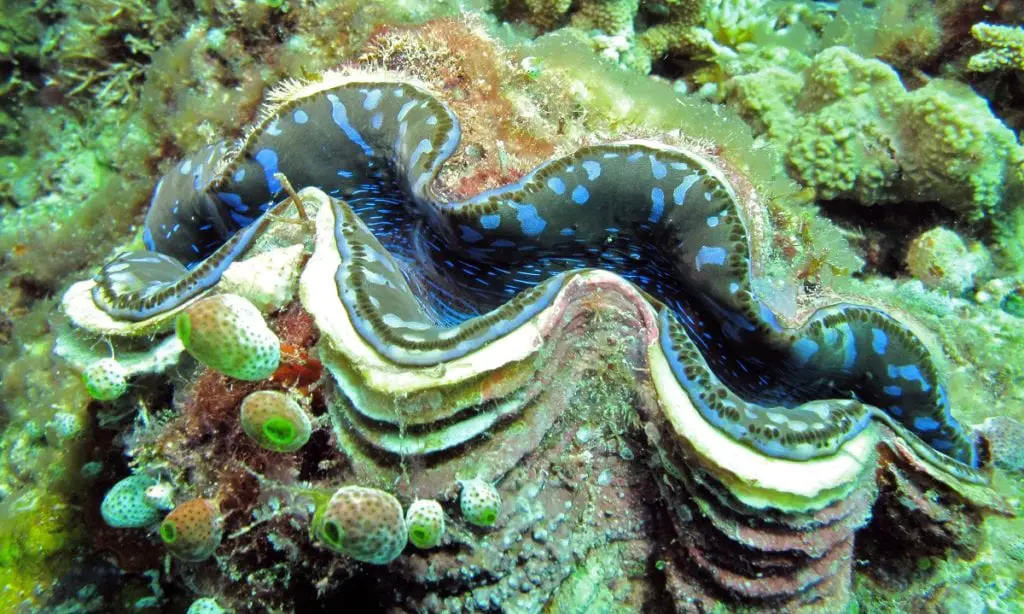“He who cheats the earth will be cheated by the earth,” says an old Chinese proverb.
Yet Beijing’s vow to restore precious coral reefs in the South China Sea appear as barren as the once teeming waters now occupied by its man-made islands.
After a sharp decline in activity from 2016 to late 2018, Chinese giant clam harvesting fleets have returned to the South China Sea.
The poaching fleets, dozens of small fishing vessels accompanied by a handful of larger “mother-ships,” ransack and destroy massive tracts of coral reef that were millennia in the making.
Contents
What Giant Clam Poachers Reveal About China’s South China Sea Strategy
China has announced its intention to restore coral reefs damaged during the construction of its three largest man-made outposts in the South China Sea.
But while the activities of the poachers seem to contradict Beijing’s stated policy, Chinese Coast Guard personnel have actively protected the reef-plundering vessels.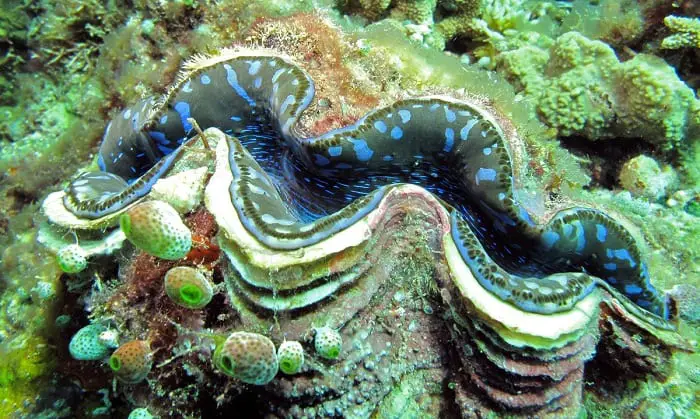
“Ecological Protection?”
For years now, Chinese fishing fleets have been the vanguard of Beijing’s broader ambitions in the area.
Increasingly, armed vessels of China’s Coast Guard or seaborne militias accompany the fishing boats.
“The Chinese used knives to cut our nets, they destroyed the equipment and threw the food into the sea,” recalls a Vietnamese fisherman.
In January, the state-run Global Times reported the establishment of Chinese ecological conservation and restoration facilities on Fiery Cross, Subi, and Mischief reefs in the Spratly archipelago.
“The goal of the facilities is to strengthen ecological protection in the South China Sea and to fulfill the responsibility of protecting and restoring the ecology of territorial space, according to the Ministry of Natural Resources,” the report said.
Still, experts question China’s motives behind the move. The return of the clam harvesting armadas in the region only serves to deepen their misgivings.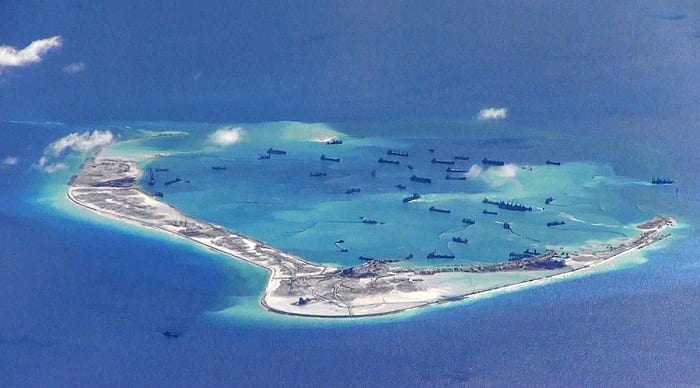
“Widespread Chopping of Reefs”
Filipino fishermen have been watching the poachers for years at Scarborough Shoal. The reef was the site of a tense standoff between the Chinese and Philippine navies in 2012.
The Chinese Coast Guard regularly visits the giant clam poaching fleets working the shoal, the fishermen say. Armed Chinese Coast Guard speedboats bully other vessels away from the area during those visits.
The giant clam meanwhile gets only one chance to find a home. Once it fastens itself to a spot on a reef, there it sits for the rest of its life.
Emboldened by the Chinese Coast Guard, the poaching fleets drop anchor on contested shallow-water reefs.
Fishermen then pop out of the smaller boats. The men drag the brass propellers of their outboard motors back and forth across the coral until the giant clam shells are exposed.
The devastation is at once immense and irreparable, say experts.
“The scarring, resulting from widespread chopping of reefs by fishermen using propellers mounted on small boats in order to poach giant clam shells, is visible on recent images of at least 28 reefs…,” says John McManus of the University of Miami, referring to satellite images of the destroyed reefs.
A Two-Pronged Menace
Climate change is already exacting a toll on the delicate ecosystems that thrive on the threatened reefs.
Experts have said the world is on course for a temperature increase that will wipe out enormous chunks of the world’s coral ecosystems.
Officials of the Philippine Department of Agriculture meanwhile warn that Filipino fish harvests have already seen a dramatic decline over the past five years.
The dwindling catch has driven up food prices in a country where two out of every 10 people live under conditions that approach extreme squalor.
Fish is a valued source of protein for the poorest of the Filipino poor.
“Our nation cannot thrive through mindless exploitation of its resource base,” says Philippine agriculture undersecretary Ariel Cayanan. “Such irresponsibility breeds a sickly, fruitless environment.” 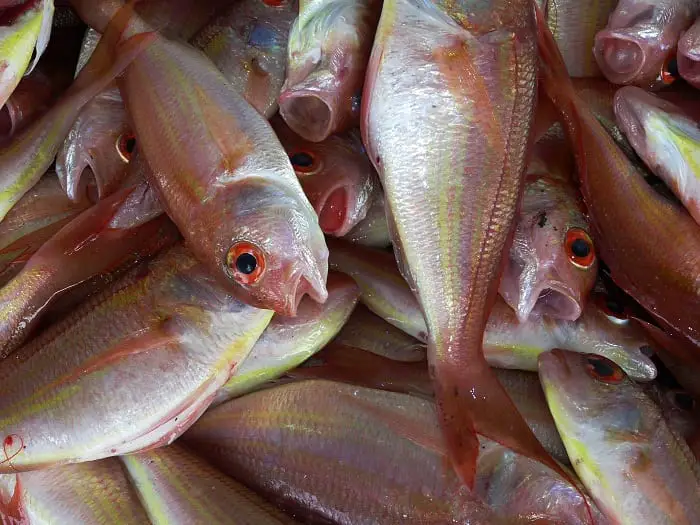
Big Money, Big Clams, Big Claims
The giant clams are not valued for their meat. They are long dead, in fact. Sometimes, when they are found alive, the Chinese fishermen cut them up for a meal.
Other times they just throw the clams overboard, Bloomberg reports.
The poachers take the shells, instead. Those are worth a fortune in China. There, craftsmen in the Hainan Province shape the shells into jewelry and statues.
When intricately carved, some of the pieces have reportedly fetched as much as $1 million.
This is bad enough in itself. A few Southeast Asian countries have protested China’s open contempt for their borders and international laws. 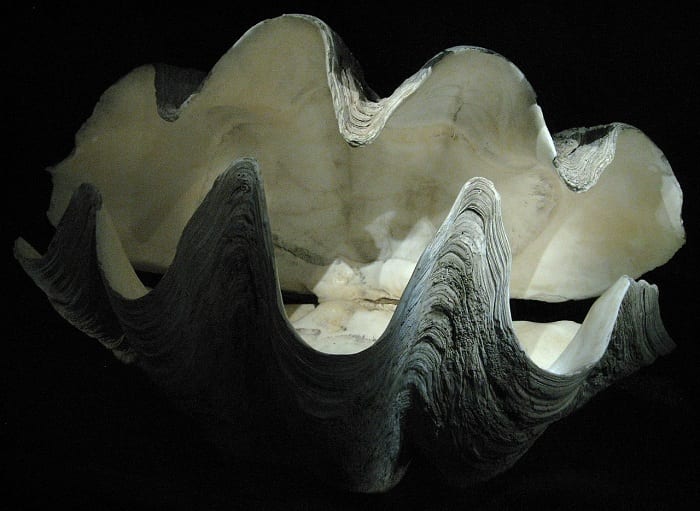
In 2016, the Permanent Court of Arbitration, a globally recognized tribunal, ruled that China owes a handful of Southeast Asian countries more than $177 billion for its intrusions into the South China Sea.
China rejected the ruling outright. The world could do nothing in the face of the brazen disrespect.
Chinese claims in the South China sea are delineated in part by its nine-dash line policy. This was originally an “eleven-dashed-line,” as indicated by the Kuomintang government of the Republic of China in 1947.
No other government or country in the world has formally recognized these claims, which cover around 80 percent of the South China Sea.
An estimated US$3.4 trillion worth of seaborne global trade meanwhile passed through the area in 2016 alone.
Millennia in the Making
The giant clam poachers cause immeasurable damage to the coral reefs in the South China Sea.
The reefs begin to form when coral larvae attach to submerged rocks or other hard surfaces along the edges of islands or continents.
As the corals grow, reefs take on one of three major characteristic structures: fringing, barrier, or atoll.
“Depending on their size, barrier reefs and atolls can take from 100,000 to 30 million years to fully form,” says the US National Oceanic and Atmospheric Administration.
McManus,
whose expert testimony helped to secure the Permanent Court of Arbitration’s
2016 ruling, says Chinese poachers had already destroyed 25,000 acres of coral
reef as of three years ago. 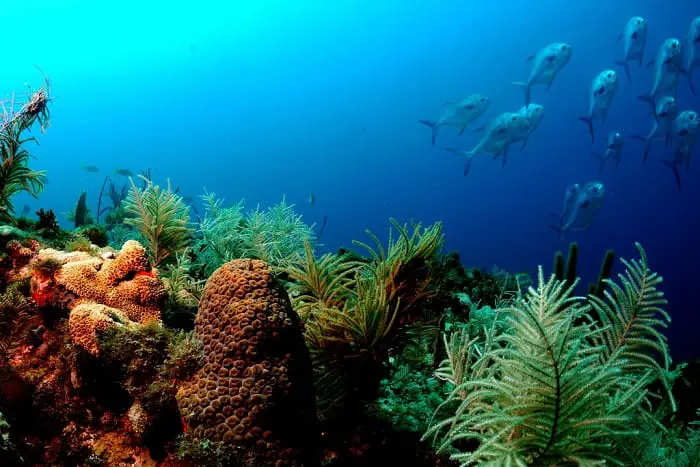
Praiseworthy?
The speed and scale of China’s island-building spree had alarmed other countries with interests in the region.
Chinese constructor vessels shredded entire coral reefs, sucked up the debris, and blew it onto land. The biggest of these ships was the dredger, Tianjing.
The enormous vessel moved about 4,500 cubic meters of material every hour. That is nearly enough to fill 48 Olympic-sized swimming pools each day. The destruction was catastrophic.
Astonishingly enough, Beijing praised the process.
China’s foreign ministry said it was a simulation of “the natural process of sea storms blowing away and moving biological scraps which gradually evolve into oasis on the sea.”
Does the world really believe that Beijing wants to restore the coral reefs it destroyed in the South China Sea?
The bullies rule the playground for now. Up to when will we endure with the tyranny?

